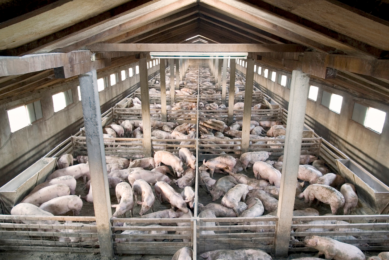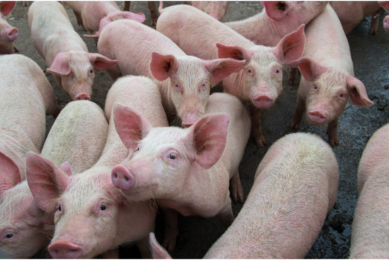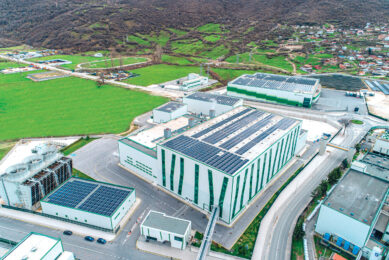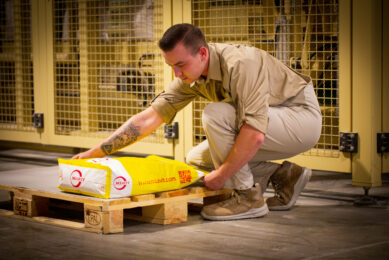Get the most out of it: How to use vaccines effectively

Only healthy pigs deliver their full genetic potential. Vaccines against endemic diseases are an important cornerstone for keeping pigs productive. It is a smart approach to make use of the body´s own defence mechanisms by using vaccines that switch on the pig’s immune system. You prepare the pig for the “real” attack of the infectious agent, which leads to a lower impact on production.
PIG HEALTH SPECIAL 2024 – read all articles
However, a vaccine will not boost your production in all cases. There are a few key facts that are needed for success. A vaccine is specific for a pathogen and must be delivered correctly. Vaccinations must happen in enough time ahead of an infection to allow the body to build immunity. And pigs must be able to respond.
So, how can we get most out of the vaccination programme?
Choice of vaccine
A vaccine is always specific to an organism, that is, it contains material from a specific pathogen called antigen. The antigen in the vaccine determines to the immune system who the “enemy” is. And it needs the complete formulation of the vaccine to trigger an effective immune reaction.
If health problems occur, it is necessary to conduct a meaningful diagnostic work-up to find the cause of disease. Various pathogens and non-infectious factors can cause similar symptoms (see case 1). Starting with a definite diagnosis, vaccination can effectively protect the herd.
Storing and administration
It is of paramount importance to consider the manufacturer’s instructions for storage and use. Incorrect storage – too warm or too cold – can lead to destruction of the antigen and turn the vaccine ineffective. Wrong storage also has the potential risk to increase adverse reactions in the pigs, such as system or injection site reactions. Studies in pig farms revealed that up to one-third of refrigerators used for the storage of vaccines are too warm or too cold. Before use, some vaccines must be allowed to reach room temperature.
Vaccines are for immediate use after opening with very limited time span to keep open vials in use. Light, oxygen and potential contamination lead to ineffectiveness or even cause damage when used (see case 2). However, studies showed, that roughly one- to two-thirds of all interviewed farms, put opened vaccine vials back in fridge for later use.
The vaccine needs to be administered at full dosage in the correct location. According to a study, up to 80% of injections in practice are not placed correctly or under-dosed, in worst cases. This number provides an enormous potential for improvement.
Being self-critical and checking back on storing and administration can get more out of the vaccines you are using.
Timing of application
Vaccination needs to happen well ahead of the expected time of infection, as immunity must build. It takes about 2 to 3 weeks to build or boost immunity after vaccination depending on the product and type of vaccine. For a 2-dose programme this means 2 to 3 weeks after the second shot. The effect of vaccination is long-lasting and continues protecting pigs when they are challenged during the duration of immunity.
Vaccination must happen early enough to protect against natural challenge, but it should not be conducted too soon. On the one hand, maternally derived immunity – mainly maternal antibodies – are transmitted via colostrum and can impair the efficacy of some vaccines given to piglets. On the other hand, although all parts of the piglets’ immune system are developed at birth, it matures over time and will increase its response over weeks. The relationship is linear: The younger the animal, the lower the immune response. The older the animal, the better the immune response.
The status of the animal or its immune system
In case of vaccination, the immune system is the crucial element of success. Several factors can negatively affect an immune response. To name a few: stress, mycotoxins, malnutrition, or a concurrent infection with another organism. A good example in relation to the last point is the porcine reproductive and respiratory syndrome virus (PRRSV). It has been demonstrated that PRRSV infection at the time of vaccination against M. hyopneumoniae (M. hyo; Causing enzootic pneumonia) can reduce the effectiveness of the vaccine. Nutritional state and feed supply must be considered. It requires energy to “train” the immune system and proteins, specific trace elements and vitamins are essential for a solid immune response.
Yet, a vaccine cannot compensate for weak management. Even a well-trained immune system may fail to protect in the face of an overwhelming pathogen challenge due to weak biosecurity, bad ventilation and pig flow management.
Conclusion
Checking vaccination programmes for what, how, when and who is worth a lot, to get most out of the vaccines in use.






